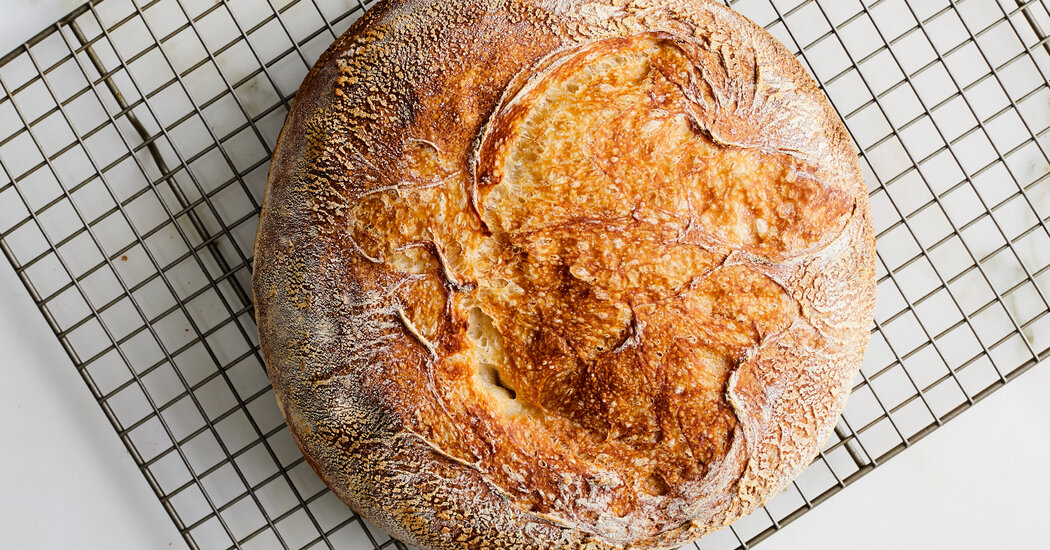
That said, I’ve always wanted to take a more organized look at the bread I was baking and to solve some of the issues that I — and other home bakers — have had in the past. Chief among these are the dough’s slackness and its propensity to spread into a pancake-like loaf, baking up flat and dense, if even lightly mishandled.
This all has to do with elasticity and extensibility. Elasticity is a dough’s ability to spring back when you stretch it, like a rubber band. Extensibility is the flip side of this: the ability for a dough to stretch without snapping back or tearing. Finding the right balance between these two is the trick.
With pizza dough, for instance, extensibility must be high to stretch a ball of dough into a thin, crisp crust that retains enough structure to stand up to wet, heavy toppings. This same extensibility in a rustic boule or bâtard can result in dough that lacks the structure to retain its shape. Too much elasticity, on the other hand, and you wind up with a dense crumb structure.
A few things helped me achieve this balance.
Mr. Migoya suggested that a small amount of acid could improve the formation of gluten bonds; in side-by-side tests, a drop or two of vinegar or lemon juice made an appreciable difference in dough strength.
Virtually every baker I talked to proposed adding folding and stretching steps, and, in my own testing, I found that Mr. Migoya’s recommendation of giving the dough a few tugs and folds every half-hour or so during the initial two to three hours of its long resting period worked best. The more tugs and folds you do, the more structure the dough will have, resulting in higher elasticity and a denser, more compact crumb. (On a tip from Mr. Reinhart, I dip my hands in water before handling the dough, a far more effective means of keeping your hands clean than flouring.) After that, the dough can rest on the counter until ready to shape and proof — at least a few hours, but up to overnight is fine. Or, even easier, settle it in the refrigerator overnight or for up to three nights before proofing. (An extended rest in the fridge will result in better flavor than a short room-temperature rest.)
A final shaping stretch before proofing and baking is enough to give the dough the structure I like. The goal is to create a membrane that smoothly wraps around the dough, similar to how fresh mozzarella or burrata has a taut skin stretched around a softer, less-structured interior. Some bakers use a plastic or metal scraper to tuck the dough into its final shape. Mr. Migoya recommends a flexible metal putty knife, the kind you’d use to spackle a wall. I find it easiest to work manually: I hold my fingers together and use the edges of my palms to tuck the skin underneath the ball, effectively smoothing out the top. As with all steps here, the less you handle the dough, the better; fifteen to 30 seconds of shaping is a reasonable goal.
It’s important to note that there’s no “correct” crumb structure, despite what strangers on social media will have you believe. The current pandemic-inspired craze, for high-hydration sourdough loaves with a large, open hole structure, is perfect for catching pockets of jam or soft butter. But try making a grilled cheese sandwich on bread that’s too holey, and watch as the cheese oozes out. Then, you’ll find the value in loaves with a tighter crumb structure. Knowing that adding extra stretches and folds will produce a tighter crumb will allow you to modify your technique to suit your own tastes.



